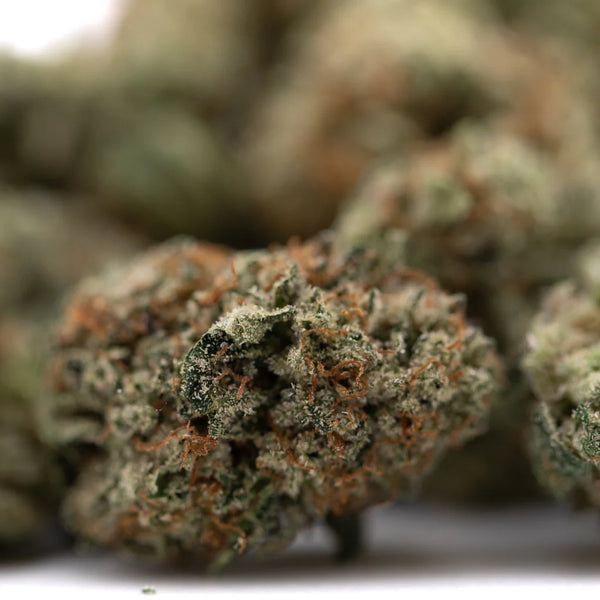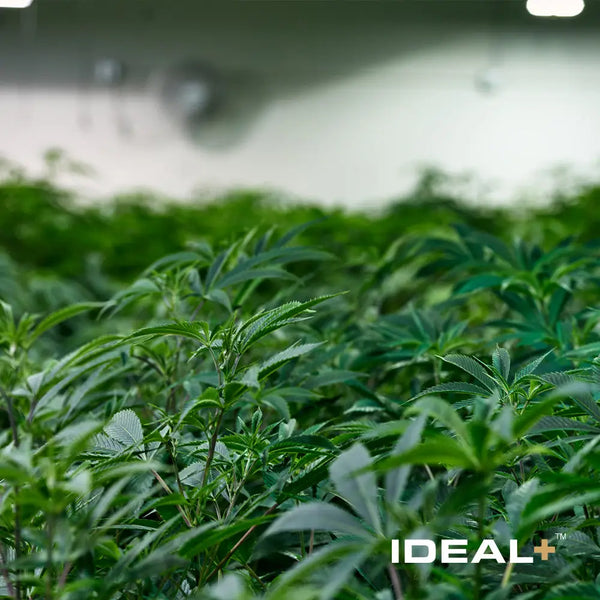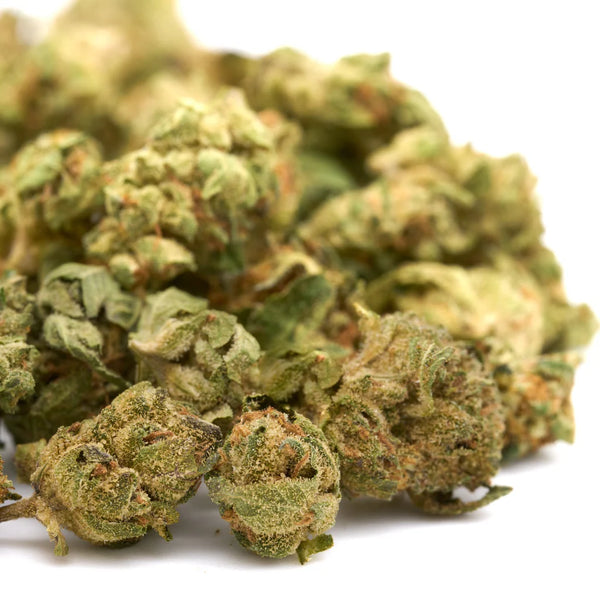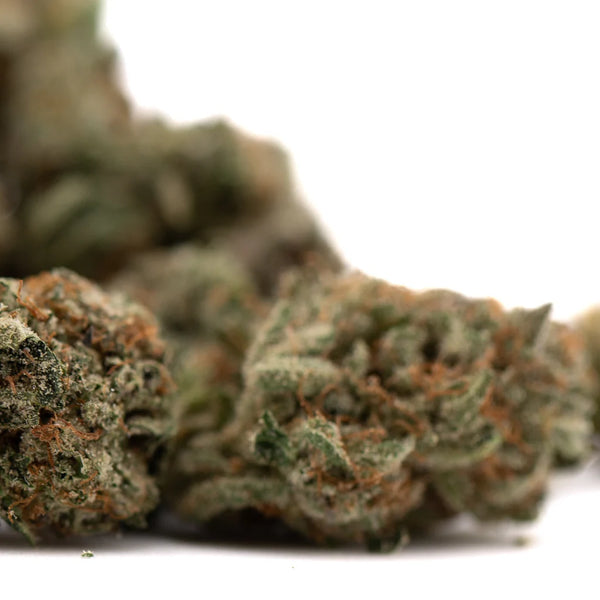No Products in the Cart
INDOOR THCA FLOWER 5g - $39.99 | GREENHOUSE THCA FLOWER 7g - $34.99

When shopping for cannabis products, you've probably noticed terms like "smalls," "popcorn buds," or "B-buds" listed at significantly lower prices than their full-sized counterparts. But what exactly are these smaller buds, and more importantly, does the growing method—indoor versus greenhouse—actually impact their quality? If you're searching for THCa smalls for sale, understanding these distinctions can mean the difference between finding exceptional value and settling for subpar product.
In the evolving world of hemp-derived THCa flower, "smalls" represent an often-overlooked category that delivers premium cannabinoid content at a fraction of the cost. These smaller buds—typically ranging from popcorn-size to just under the standard gram-plus colas—develop on the lower branches of cannabis plants where light penetration is less intense. Despite their diminutive size, these buds contain the same genetic profile, cannabinoid potency, and terpene richness as their larger siblings growing at the plant's apex.
The cultivation method, however, introduces significant variables that affect the final product's characteristics. Indoor cultivation offers unprecedented environmental control, allowing growers to optimize every factor from light spectrum to humidity levels. Greenhouse cultivation, conversely, harnesses natural sunlight while providing protection from environmental extremes, creating a middle ground between outdoor and indoor approaches. These fundamental differences shape everything from bud density and trichome production to terpene profiles and overall cannabinoid expression.
Today, we're conducting a comprehensive head-to-head comparison between two exceptional affordable THCa flower options: Tropical Punch indoor smalls and Strawberry Diesel greenhouse smalls. Both strains represent the upper echelon of small bud THCa offerings, yet their cultivation methods create distinct experiences for consumers. Whether you're a connoisseur seeking specific characteristics or a budget-conscious consumer maximizing value, understanding these differences will help you make an informed purchasing decision.
Before diving into our strain comparison, let's establish exactly what we mean by "smalls" and why they represent such exceptional value in the THCa market.
Premium hemp smalls are simply smaller flower buds that develop on the lower portions of cannabis plants. In commercial cultivation, plants naturally produce a hierarchy of bud sizes. The main cola at the plant's apex and upper branch tips receive the most intense light exposure, resulting in large, dense flowers that command premium prices. Meanwhile, buds growing in shadier locations further down the plant remain smaller—typically 0.3 to 0.8 grams—but maintain nearly identical cannabinoid profiles to their larger counterparts.
The cannabis industry's traditional focus on bag appeal and bud size has created an arbitrary price tier system where appearance often matters more than actual quality metrics. This market inefficiency works in favor of informed consumers. When you purchase smalls, you're essentially paying less for the same genetics, potency, and effects—the only difference being visual aesthetics that vanish the moment you grind your flower for consumption.
From a chemical composition standpoint, THCa flower quality in smalls is remarkably consistent with full-sized buds. The plant's genetic programming determines cannabinoid synthesis, meaning THCa production occurs relatively uniformly throughout the plant's flowering sites. Laboratory testing consistently demonstrates that smalls from quality cultivators test within 1-3% of their premium-sized equivalents in total THCa content.
Terpene profiles in smalls also remain robust, though some subtle variations may occur. Lower buds might experience slightly different terpene ratios due to varying environmental exposure, but these differences typically enhance rather than diminish the overall experience. Many connoisseurs actually prefer the terpene nuances found in smalls, which can offer a more complex aromatic bouquet than the sometimes one-dimensional profiles of tops.
The cost-effectiveness of budget THCa flower becomes apparent when you consider the economics. Premium full-sized buds might sell for $100-150 per ounce, while smalls from the same harvest often retail for $50-80 per ounce—a 33-50% reduction for essentially equivalent potency. For consumers who grind their flower, use it in edibles, or simply prioritize effects over aesthetics, smalls represent unparalleled value.
Quality growers maintain the same cultivation standards, harvest timing, and curing protocols for smalls as they do for their premium buds. The flowers are carefully trimmed, properly dried, and thoughtfully cured to preserve terpenes and maximize freshness. When sourcing from reputable vendors, smalls should exhibit the same attention to quality control as any top-shelf product—just in a smaller package.

Indoor THCa flower cultivation represents the apex of environmental control in cannabis production, and Tropical Punch exemplifies the benefits of this approach. Indoor growing allows cultivators to create perfectly optimized conditions that maximize cannabinoid production, terpene development, and overall flower quality.
Indoor cultivation eliminates the variables that plague outdoor and even greenhouse operations. Temperature remains precisely regulated within the optimal 70-80°F range throughout the growth cycle, preventing stress that can reduce cannabinoid synthesis. Humidity levels are dialed in to specific percentages appropriate for each growth stage—higher during vegetative growth (60-70%) and progressively reduced during flowering (40-50%) to minimize mold risk while maximizing resin production.
Light intensity and spectrum are perhaps indoor growing's most significant advantages. High-quality LED systems or HPS lights deliver consistent, intense illumination with spectral outputs specifically tuned to cannabis's photosynthetic preferences. Unlike sunlight's variable intensity and seasonal spectrum shifts, indoor lights maintain constant parameters that push plants to their genetic potential. Modern LED systems can even adjust their spectrum throughout the growth cycle, emphasizing blue wavelengths during vegetative growth and shifting toward red during flowering.
Tropical Punch benefits enormously from this controlled approach. This strain's genetics express vibrant tropical fruit terpenes—specifically myrcene, limonene, and beta-caryophyllene—that reach peak concentration when plants experience no environmental stress. The stable indoor environment ensures these delicate volatile compounds develop fully and survive the drying and curing process intact.
When examining potent THCa smalls from indoor cultivation, several quality indicators immediately stand out. Tropical Punch indoor smalls typically display exceptional trichome density—the tiny crystalline structures that house THCa and terpenes. Under magnification, these trichomes should appear milky white with amber accents, indicating optimal harvest timing when THCa content peaks.
Bud structure in indoor-grown Tropical Punch demonstrates the dense, compact formation characteristic of light-saturated flowers. Even the smaller buds maintain satisfying weight relative to their size, with minimal stem and leaf material. The hand-feel is springy yet dense, with flowers that rebound slightly when gently squeezed—a sign of proper moisture content (typically 9-12%) that preserves terpenes while preventing mold.
Color presentation in quality indoor flower showcases the full potential of the strain's genetics. Tropical Punch smalls reveal deep forest green base colors accented by purple undertones and vibrant orange pistils. Indoor growing's controlled environment prevents the bleaching or discoloration that can occur with excessive light exposure while ensuring even chlorophyll distribution throughout the bud structure.
The visual appeal of Tropical Punch indoor smalls demonstrates why THCa growing methods significantly impact final product quality. These buds exhibit a frosted appearance, with trichome coverage so dense it creates a silvery sheen across the flower surface. Individual calyxes are swollen and well-developed, creating the characteristic chunky, irregular surface topology that indicates optimal cannabinoid production.
The trim quality on premium indoor smalls is meticulous. Excess leaf material is carefully removed while preserving the sugar leaves—those small leaves closest to the bud that are themselves heavily coated in trichomes. This careful trimming maintains potency while improving smoothness and flavor.
Perhaps most importantly, indoor cultivation prevents the pest damage and environmental blemishes that occasionally appear in greenhouse and outdoor products. Tropical Punch indoor smalls should be pristine, free from discoloration, physical damage, or contamination—reflecting the sterile, controlled environment of their cultivation.
Greenhouse hemp flower represents a sophisticated middle path between purely outdoor and completely indoor cultivation. Strawberry Diesel greenhouse smalls demonstrate how this hybrid approach can produce exceptional quality while offering both economic and environmental advantages.
Greenhouse cultivation harnesses the sun's full spectrum light—something no artificial light can perfectly replicate. Natural sunlight contains a complete range of wavelengths from UV to infrared, providing energy for photosynthesis while triggering specific genetic expressions that artificial lights may miss. The sun's intensity, particularly during peak growing months, far exceeds even the most powerful indoor lighting systems, often delivering 10,000+ lumens per square foot compared to indoor systems' 5,000-8,000 lumens.
This natural light intensity drives robust plant growth and cannabinoid production. Cannabis plants evolved to maximize THCa synthesis under direct sunlight, and greenhouse cultivation allows them to express this genetic programming fully. Strawberry Diesel, with its robust diesel fuel and strawberry terpene profile, develops particularly well under natural light conditions that encourage complex terpene synthesis.
The greenhouse environment also provides natural temperature fluctuations that some cultivators believe benefit terpene development. Moderate temperature swings between day and night (typically 10-15°F differential) may stress plants just enough to boost secondary metabolite production—including terpenes and cannabinoids—as a defensive response. This controlled stress differs from the damaging extremes outdoor plants might experience, instead creating beneficial adaptation responses.
Modern greenhouse operations achieve impressive sustainability metrics compared to energy-intensive indoor facilities. By relying primarily on solar energy for lighting, greenhouses reduce electricity consumption by 70-90% compared to indoor operations. This translates to both lower production costs—savings that conscientious vendors pass to consumers—and a dramatically reduced carbon footprint.
Advanced greenhouse designs incorporate sophisticated climate control while maintaining this efficiency advantage. Automated ventilation systems, evaporative cooling, and strategic shading allow growers to manage temperature and humidity while still leveraging natural light. Some operations integrate supplemental LED lighting for use during low-light periods, creating a hybrid approach that captures benefits from both methodologies.
Water efficiency in greenhouse operations also typically exceeds indoor facilities. Natural humidity fluctuations and airflow patterns reduce the need for constant humidification or dehumidification, while rainwater collection systems can supplement irrigation needs. These ecological considerations increasingly matter to consumers seeking sustainable THCa smalls for sale.
Strawberry Diesel greenhouse smalls exhibit distinct characteristics that reflect their cultivation method. These buds typically display a slightly more open structure compared to indoor alternatives—not fluffy or airy, but with marginally more space between calyxes. This structure actually benefits grinding and airflow during consumption, potentially creating more even heating and flavor release.
The color palette of greenhouse hemp flower often shows greater variation and natural character. Strawberry Diesel smalls might display lighter green tones with more pronounced natural variegation—golden yellows, subtle purples, and even hints of pink that reflect the strain's strawberry nomenclature. These color variations indicate the plant's natural response to real sunlight and aren't indicators of inferior quality.
Trichome production in quality greenhouse cannabis rivals indoor alternatives. Strawberry Diesel smalls should still present generous crystal coverage, though the distribution might appear slightly less uniform than indoor flower. Natural light's angle and intensity variations throughout the day create subtle differences in trichome density across the bud's surface, but total cannabinoid content remains competitive.
The aromatic profile of greenhouse Strawberry Diesel often surprises first-time consumers with its intensity and complexity. The combination of natural sunlight, moderate environmental stress, and longer flowering periods allowed by controlled greenhouse environments can produce remarkably robust terpene profiles. Strawberry Diesel's characteristic mix of sweet strawberry notes, pungent diesel fuel undertones, and earthy base notes often express more completely in greenhouse conditions than artificial indoor environments.

When comparing small bud THCa from different growing methods side-by-side, several visual distinctions become apparent—though neither indicates superior quality outright.
Bud Density and Structure: Tropical Punch indoor smalls typically present with tighter, more compact bud structure. The flowers feel denser in hand, with calyxes pressed tightly together. Strawberry Diesel greenhouse smalls show a marginally more open structure with slightly more visible calyx definition. Both structures have advantages—denser buds often weigh more per volume, while more open structures can provide better airflow during consumption.
Trichome Coverage and Distribution: Indoor Tropical Punch usually displays more uniform trichome distribution, with consistent crystal coverage across all surfaces. The controlled environment ensures every part of each bud receives similar light intensity, creating even resin production. Greenhouse Strawberry Diesel shows robust trichome coverage that may vary slightly across the bud's surface, with particularly heavy concentration on surfaces that received direct sunlight exposure. Total trichome production between the two methods is comparable in quality operations.
Color Characteristics: Indoor cultivation typically produces more consistent, sometimes more vibrant colors. Tropical Punch indoor smalls showcase rich, uniform greens with consistent purple accents. Greenhouse Strawberry Diesel often displays more natural color variation—lighter and darker greens, more prominent color transitions, and sometimes more pronounced secondary colors. These variations reflect the plant's natural response to environmental fluctuations and don't indicate quality differences.
Pistil Condition: Indoor flowers often maintain brighter, more uniformly colored pistils (the hair-like structures on buds) due to protection from UV degradation. Greenhouse flowers may show more color variation in pistils, ranging from bright orange to darker rust tones. Again, this reflects natural light exposure rather than quality issues.
Overall Aesthetics: Indoor premium hemp smalls tend toward what the industry considers "bag appeal"—the highly manicured, photogenic appearance featured in marketing materials. Greenhouse smalls present a more natural, organic appearance that some consumers actually prefer for its authenticity. Neither aesthetic superior; preference depends on whether you value commercial polish or natural character.
Laboratory testing provides objective data that cuts through subjective aesthetic preferences and marketing claims. When comparing THCa flower quality, lab results reveal how cultivation methods impact cannabinoid and terpene profiles.
Quality indoor Tropical Punch smalls typically test between 20-28% total THCa content, with premium batches occasionally exceeding 30%. The controlled environment allows growers to push plants to their genetic maximum, optimizing every variable for cannabinoid production. Indoor cultivation's precise control over the flowering photoperiod (the light/dark cycle) ensures plants can dedicate maximum energy to resin production without stress.
Greenhouse Strawberry Diesel smalls from reputable growers typically test between 18-26% total THCa—slightly lower on average than indoor alternatives but still delivering potent effects. The natural light's intensity compensates for other variables, and many greenhouse operations produce batches that match or exceed indoor percentages. The difference is often negligible from a consumer experience standpoint; a 2-4% variance in THCa content rarely translates to noticeably different effects.
Total cannabinoid content (THCa + minor cannabinoids) often favors greenhouse cultivation. Natural sunlight's full spectrum appears to encourage broader cannabinoid expression, resulting in higher levels of minor cannabinoids like CBG, CBC, and CBN. These compounds contribute to the "entourage effect"—the synergistic interaction of multiple cannabinoids that many believe enhances overall effects beyond THCa alone.
Terpene analysis reveals fascinating differences between cultivation methods. Indoor Tropical Punch typically shows pronounced primary terpenes—myrcene (tropical fruit, earthy), limonene (citrus, uplifting), and beta-caryophyllene (spicy, peppery)—in relatively high concentrations. Total terpene content in quality indoor flower often ranges from 1.5-3.0%, with some exceptional batches exceeding 3.5%.
The controlled environment optimizes conditions for specific terpene production, resulting in bold, distinct aromatic profiles. However, the terpene diversity—the total number of different terpenes present—may be slightly lower in indoor cultivation, as the stable environment doesn't trigger the full range of adaptive aromatic compound production.
Greenhouse Strawberry Diesel often presents more complex terpene profiles with greater diversity. While primary terpenes (myrcene, caryophyllene, pinene, and the distinctive esters giving Strawberry Diesel its fruity character) may test at similar or slightly lower concentrations than indoor alternatives, the total number of detectable terpenes is frequently higher. This complexity creates more nuanced aromatic experiences—the aromatic equivalent of a full orchestra versus a rock trio. Both can be excellent, but they offer different experiences.
Natural environmental variations in greenhouse cultivation may stress plants to produce a broader defensive chemical arsenal. This stress response, properly managed, enhances rather than diminishes quality, resulting in potent THCa smalls with sophisticated aromatic profiles.
Beyond THCa and terpenes, full-spectrum lab results reveal how cultivation methods influence minor cannabinoid production. Indoor cultivation's controlled environment tends to produce higher ratios of THCa to other cannabinoids, with minor cannabinoid percentages (CBG, CBC, CBN, THCV) typically comprising 0.5-1.5% of total cannabinoid content.
Greenhouse cultivation often yields broader cannabinoid spectrums, with minor cannabinoids comprising 1.0-2.5% of total content. The natural light spectrum and moderate environmental stress appear to activate genetic pathways for diverse cannabinoid synthesis. This enhanced entourage effect may explain why some consumers report more complex effects from greenhouse products despite comparable THCa percentages.
Third-party lab testing from accredited facilities should verify both cultivation methods produce clean products free from pesticides, heavy metals, and microbial contamination. Reputable growers using either method consistently pass these safety screenings, confirming that environmental control doesn't solely determine cleanliness—cultivation practices and post-harvest handling matter equally.
Your optimal choice depends on intended use. For consumers who grind flower for pre-rolls or vaporizers, the aesthetic differences between cultivation methods become irrelevant, making greenhouse smalls the obvious value choice. The slightly lower THCa percentage has minimal practical impact when you're using the product anyway.
For those displaying flower in clear storage containers or those who derive satisfaction from premium aesthetics, indoor smalls justify their premium. The visual and structural consistency of indoor THCa flower provides tangible psychological value beyond chemical composition.
Medical users requiring precise dosing might prefer indoor options' more consistent THCa percentages, simplifying dose calculations. Conversely, users seeking the entourage effect may favor greenhouse products' broader cannabinoid and terpene profiles for potentially enhanced therapeutic benefits.
For bulk purchasers or regular consumers, the cumulative savings of greenhouse smalls add up significantly. Over a year, choosing $60 per ounce greenhouse over $80 per ounce indoor saves $240 for someone using one ounce monthly—funds that could purchase three additional ounces of product.

The head-to-head comparison between Tropical Punch indoor THCa smalls and Strawberry Diesel greenhouse smalls reveals a nuanced picture where "best" depends entirely on individual priorities and circumstances.
Indoor THCa flower smalls like Tropical Punch excel when you prioritize:
Choose indoor smalls if you're a connoisseur who appreciates cultivation craft, if you're seeking the absolute highest potency available, or if you simply prefer the commercial polish and consistency that controlled-environment cultivation provides.
Greenhouse hemp flower smalls like Strawberry Diesel win when you value:
Choose greenhouse smalls if you're budget-conscious, environmentally aware, or seeking the most authentic cannabis experience with naturally diverse chemical profiles. The savings allow regular consumers to enjoy premium genetics without premium prices.
Both options represent exceptional premium hemp smalls that deliver quality far exceeding their price points. The small bud format provides access to top-tier genetics and potent effects without paying for aesthetic perfection that disappears upon consumption. Whether you choose Tropical Punch's indoor precision or Strawberry Diesel's greenhouse authenticity, you're accessing potent THCa smalls that prove quality doesn't require premium pricing.
The democratization of cannabis quality through affordable smalls format benefits the entire community. Experienced consumers stretch their budgets further, while newcomers can explore different strains and cultivation methods without significant financial risk. As the THCa growing methods continue evolving and the market matures, we can expect both indoor and greenhouse products to reach even higher quality standards while maintaining accessible pricing.
Ultimately, the best strategy might be sampling both cultivation methods to discover your personal preferences. The relatively modest price difference makes experimentation affordable, and the knowledge gained helps inform future purchasing decisions. Whether you become a devoted indoor enthusiast or a greenhouse loyalist, the important takeaway is that affordable THCa flower in smalls format provides unprecedented access to quality cannabis experiences.
Are smalls as potent as full-sized buds? Yes! Laboratory testing consistently shows that smalls contain comparable THCa percentages to full-sized buds from the same harvest. The smaller size results from less light exposure during growth, affecting physical development but not cannabinoid production. You're getting the same genetic profile and effects at a reduced price.
Does growing method affect THCa content significantly? Both indoor and greenhouse methods can produce highly potent flowers. Indoor cultivation typically yields 2-4% higher THCa percentages on average, but premium greenhouse operations frequently match or exceed indoor numbers. The difference rarely impacts the consumer experience meaningfully.
Why are greenhouse products less expensive? Greenhouse cultivation dramatically reduces energy costs by utilizing natural sunlight instead of artificial lighting. These savings—often 70-90% lower electricity bills—allow growers to offer competitive pricing while maintaining quality standards. You're benefiting from production efficiency, not reduced quality.
How should I store THCa smalls to preserve quality? Store all THCa flower in airtight containers away from light, heat, and moisture. Glass jars with rubber seals work excellently. Maintain temperatures below 70°F and humidity around 55-62% using humidity packs if possible. Both indoor and greenhouse smalls benefit from identical storage conditions.
Can I use smalls for making edibles or concentrates? Absolutely! Smalls are ideal for extraction and edible production since appearance doesn't matter in processed products. The identical cannabinoid and terpene content makes them perfect for these applications while maximizing your budget for raw material.